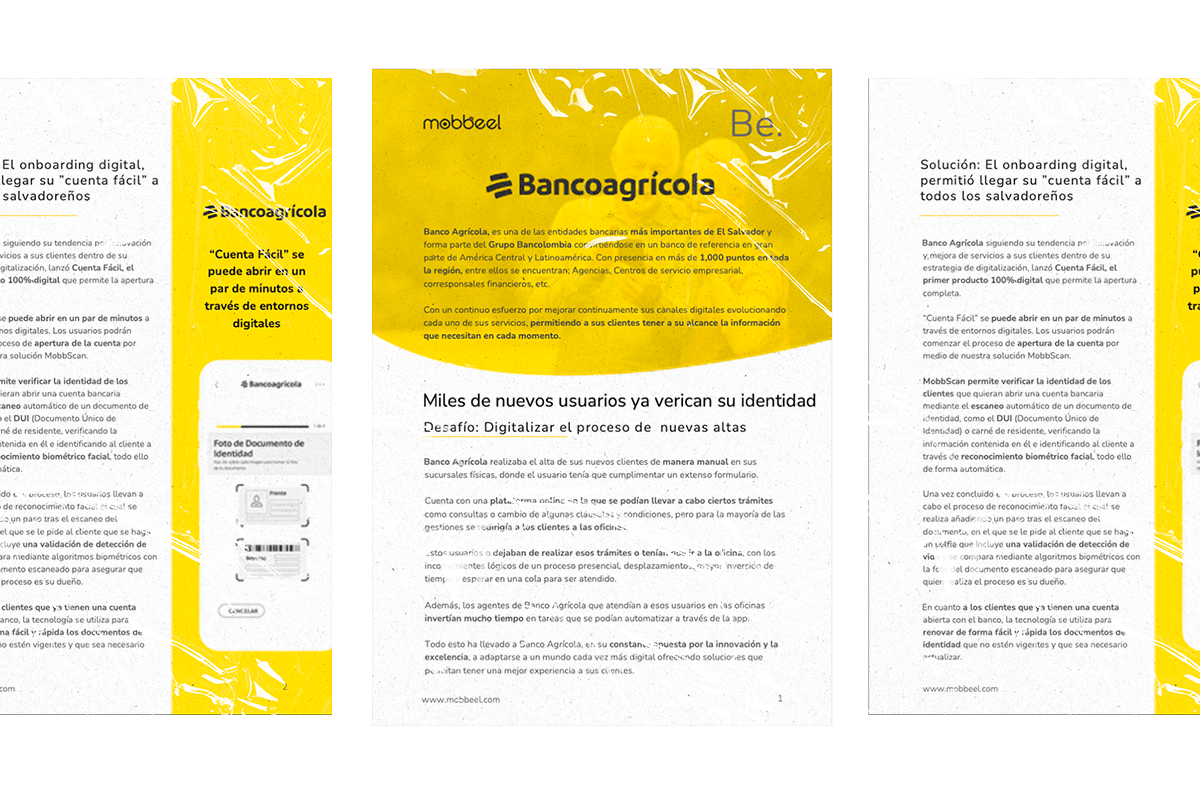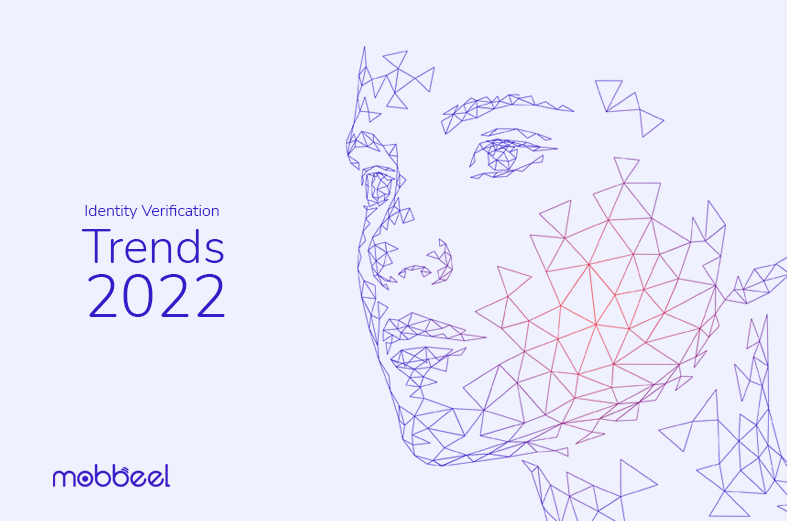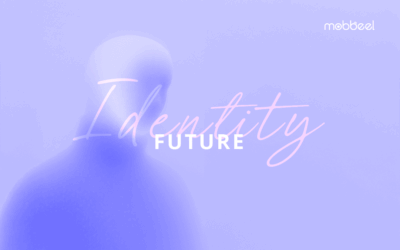Mobbeel has been working for many years in the online identity verification industry. We have been pioneers worldwide in the development of mobile biometrics since 2009 and have worked hard to keep up with the market demand.
Our clients are the business core, so every day we do our best to provide them with the latest biometric and ID technology in order to support a real digital identity.
Our efforts to understand the market fully make us the most suitable adviser to give you first-hand information on the top trends in online identity verification that you need to know about in 2022 of industries.
Governmental ID initiatives
Singapore, the United Arab Emirates, Australia, or some European Union countries are good examples of nations which are developing sophisticated programs to prove and verify citizens’ digital identity. Public services want to make it easier for people to prove their identity in procedures and make transactions even quicker. Here are some examples:
- Singapore has been working for some time on the development of a national digital identity system (Singpass) through a platform that allows the population to make transactions with the government and private companies.
- The European Union will enable a European digital identity which will be available through a digital wallet. This wallet will be installed on mobile phones to be able to carry out cross-border authentications with an electronic identification system.
- We are part of a Finland government pilot project aimed at offering authentication and digital identity services in this country.
- A Sandbox has been created in Spain to allow KYC/AML processes and biometric authentication to be taken to other business areas in a secure testing environment. Moreover, the Covid situation accelerated the change and adoption of remote identity verification technologies for processes that had been done face-to-face until then.
Financial industry remains at the forefront of identity verification solutions
Solutions that could enable identification in the digital world may not be new within the financial industry. Although, the need for fully embracing this adoption of solutions is greater than ever. They need to bring closer the merchandising of products to a consumer who is physically distant and who will keep most of the deals remotely by 2022.
In addition, the pandemic we are suffering nowadays, has triggered a large increase of the online volume of transactions. Consequently, the number of identity frauds, such as spoofing, phishing or pharming has also proportionally increased, which obliges financial institutions to reinforce even more the security of their security verification processes.
Sandbox implementation in Spain: a controlled testing environment
Last year, a sandbox was created to join the digital transformation of the financial system. A sandbox is a testing environment where Fintech and banks can test for new solutions and technologies before they are approved to move into their own systems.
The financial sandbox applied in Spain has a regulatory nature. This implies that any project accepted by the system will be under the strict supervision of a controller, which makes it a complete controlled test spot.
The creation of this sandbox will allow companies to test and launch innovative and secure solutions to the market that will develop digital financial processes, such as the digital onboarding or new biometric authentication mechanisms.
This supposes a clear benefit for the competition of companies which join this test environment, because they will also have a better control among their costs and solutions prior launching.
Security measures increase among call centers
Another trend is the increase in SIM Swapping. This fraud, which allows scammers to transfer a phone number to another device without any authorization and to receive communications associated with that phone number, has had such an impact in the last months that the AEPD (Spanish Data Protection Agency) has fined call centers with 6 million euros.
Considering the actual situation, it is more than likely that this year a new security standard will be established to verify an identity securely in real-time. The main goal is to guarantee the client’s security.
Call centers will be able to build up the authentication mechanisms of their clients when they request a duplicate SIM through facial recognition. This procedure will be easier if they get their biometric pattern during the onboarding process. Likewise, banks will begin to bet on using biometrics as the second element of authentication thanks to FIDO2, improving the process’s security and usability.
Identity verification on Web3
Blockchain technology and decentralization are making possible for the Web3 concept to emerge as a disruptive evolution of Web 2.0.
Concepts like blockchain, cryptocurrencies, NFTs, DAOs or Metaverse are becoming more and more familiar to us, and they are also changing the way of doing business. Among these Web3 new concepts, we could find the identity verification of people, becoming the key to Web3 security.
Blockchain
Another technology trend to watch in 2022 is Blockchain. It will be part of any company which plans to implement a digital identity for Web3. The reason is simple, Blockchain is one of the most secure systems for storing data and transaction records.
A couple of possible verification projects that take advantage of the blockchain technology could be:
- Store data records on the blockchain, which allow verifying people’s identity, and which are shared between banks that could cooperate for identity verification.
- Decentralized digital identities where the users themselves manage their identities in their personal wallets.
Cryptocurrencies
Improving identification processes in the crypto industry will be another important trend for this year due to its growth, the appearance of sub-niches such as NFT and the increase in identity fraud. Despite its progress, there is a growing concern about potential risks and fraud.
Therefore, crypto companies operating in Spain must be registered by the government, enrolled in the Bank of Spain, and reinforce the online verification of their clients.
Furthermore, we could find other improvable aspects of crypto platforms and wallets such as usability and the poor user experience they offer.
NFTs
NFTs are so easy to make on a marketplace but most of them do not take responsibility for checking and verifying the identity and authenticity of the makers. That is why cybercriminals create fake profiles and publish NFTs impersonating other users.
Networks like Bitcoin or Ethereum are based on anonymity and privacy, so users are identified by an alphanumeric string called Address (0x6ed5ca2edf29a67d9a866954ad3d8bfc1d217c36) and not necessarily by their name or national insurance number. It obliges Exchange and electronic wallets to reinforce their KYC measures when users register.

Metaverse
Individuals and businesses will be able to create, own, invest, work, sell goods and share experiences in a new reality called Metaverse. People will create an avatar to interact with other users there just like you can see in the Ready Player One film.
However, if they are going to interact with other people it is a must to ensure the real identity of the person behind the avatar.
It is not easy at all, but virtual worlds like The Sandbox or Decentraland must verify the users and protect their privacy and avoid identity fraud.
For that reason, verification processes in digital onboarding (KYC) will be implemented massively in the coming years.
Staff verification on remote working
Working from home is the new normal for employees around the world since last year. When people are in the office, they know each other and there is no problem sharing business information. But it is quite different when you work remotely and you do not know who is really behind the screen. Companies can be exposed to more cyber attacks and this is driving companies to embrace staff ID verification technology.
Organizations will begin shortly to integrate digital onboarding and biometric authentication solutions into their ERPs to verify the identity of their employees or even the candidates who participate in recruitment processes, making hiring staff easier.
Identity verification on Social Media Social
Media sites will have to reinforce their identity verification process when a new user wants to sign in too. Asking for data such as a name, DOB or personal email will not be enough in the mid-term. New rules try to avoid identity theft and give more credibility to social networks and platforms.
Voice biometric takeoff
Voice biometric is a recognition and authentication technology that is based on natural, unique and non-transferable voice features. It allows verifying the identity of a person through the recognition of their voice patterns.
Many financial companies have realized that in this vertiginous digitization process in which they are involved many old people are being excluded.
These people are not used to these new technologies and could even have age problems like low vision. For this specific target, voice recognition is an ideal solution since using the voice could be a friendly way to do different procedures and identify this segment of the population in a non-intrusive way.
Passive liveness detection measures breakthrough
Although we advanced some predictions about the implementation of passive life detection measures in the trends for identity verification and digital onboarding in 2019, it has not still been adopted in a massive way in the market.
Maybe, one of the main obstacles behind this late adoption is that the technology was not mature enough at that moment. However, nowadays the different technologies involved have improved enough to offer guarantees in the liveness detection process.
Besides, the process of detecting if there is a real person and not a photo or video in front of a camera has become far more robust by the combination of active and passive measures. For that, in the coming times, we will get to know projects that alternate collaborative and passive life detection measures.
NFC as a secure mechanism to capture information
The NFC technology used in passports and several identity documents, as well as in many actual smartphones, enables authentication processes at the same time that offers an excellent user experience. And, of course, it is also a protection against fraud by guaranteeing that the biometric and personal data stored in the chip is authentic.
Companies worldwide have quickly adopted this technology for user convenience and for its performance as an identity fraud buster.
As an example, in 2022, Aena and Vueling have bet on Mobbeel’s digital onboarding technology based on NFC, to check in its passengers. This will be one of the more prominent biometric projects happening in airports in the world and will facilitate airport flow through fast check-in.
Conclusion
Lots of sectors, applications and new technologies, but one common thread: the need to identify people remotely for processes that used to be face-to-face.
Businesses and governments have the challenge of effectively responding to this need.
The online identity verification trends to prepare for in 2022 are the result of our direct contact with different industries and organisations. But they are also the result of our deep knowledge of the technologies described within the article.
We have the expertise and experience required to help you improve your digital onboarding, signature or biometric authentication processes.
Haven’t you digitalised and automated your verification processes yet in 2022? What are you waiting for?
Partners and clients already trust our technology to face all the challenges and trends that the future holds. If you want to ride the crest of the wave with us and stay ahead of the changes, don’t hesitate to get in touch with us!

SUCCESS STORY
Discover Banco Agrícola’s identity verification
Experience digital onboarding through a real-life case at one of the leading financial companies in El Salvador.
This project has set a national precedent and has been replicated by numerous entities.




